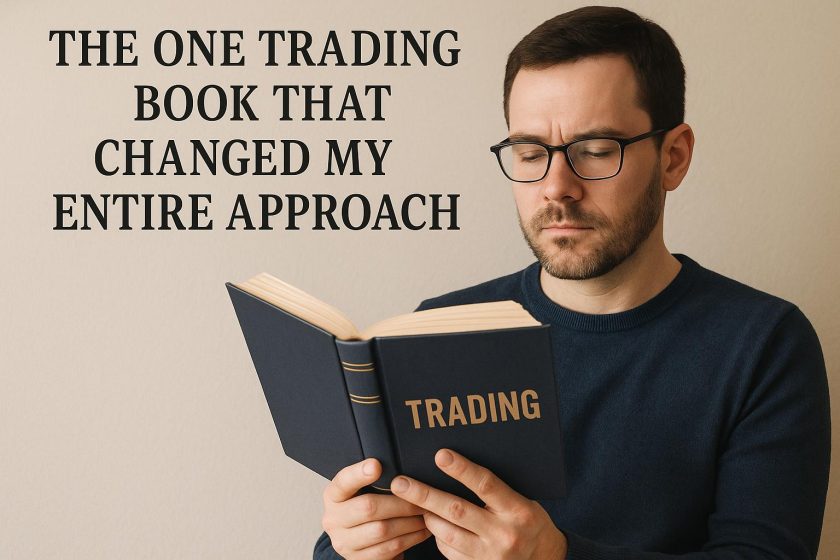Introduction
The realm of trading is a complex and often daunting environment. Many traders spend years developing strategies, only to find them consistently underperforming. Among the myriad of resources available to traders, certain books can sometimes substantially alter one’s approach to trading. This article delves into one such book that had a profound impact on my trading methodology, sparking a complete overhaul in my approach.
The Book That Made the Difference
In my journey to refine trading strategies, I encountered various books promising insights and techniques. However, it was not until I read “Trading in the Zone” by Mark Douglas that my perspective began to shift. Unlike many trading books that focus predominantly on technical analysis or chart patterns, Douglas’s work highlights the importance of trading psychology. This book illuminated aspects of trading that I had previously overlooked, particularly the critical role of mental discipline and attitude.
Key Insights from the Book
Douglas’s book provided several pivotal insights that have structured the way I perceive each trading activity.
Understanding Probabilities: One significant takeaway was the concept that trading results are governed by probabilities. This realization emphasized the importance of managing risks and accepting losses as an inherent aspect of trading. It shifted my viewpoint from a deterministic outlook to one that understands the nature of markets as inherently uncertain.
Emotional Discipline: The book stresses the necessity of maintaining emotional control when making trading decisions. This includes managing fear and greed, which often cloud judgment during transactions. Recognizing emotional impulses and learning ways to deal with them effectively became fundamental aspects of my trading routine.
The Illusion of Control: Douglas argues that many traders operate under an illusion of control, believing they can predict market movements. Understanding that markets are unpredictable allowed me to focus more on strategy and risk management rather than prediction. By accepting that I cannot control market outcomes but can manage my reactions to them, I found greater stability in my trading endeavors.
Implementing the Teachings
After digesting the insights from “Trading in the Zone”, I began integrating its lessons into my trading practice. This involved reshaping my trading plan to incorporate the management of emotions and acceptance of probabilistic outcomes. The transformation in my approach included several key strategies:
Risk Management Strategies: Implementing strict risk management protocols became a priority. This included setting stop-loss orders to protect against significant losses and ensuring that each trade carried an acceptable risk-reward ratio. My approach to risk assessment matured, with a clear focus on preserving capital.
Developing a Trading Routine: Establishing a disciplined trading routine helped maintain consistency. This routine was not just about placing trades but also involved regular reviews of performances and adaption to new market conditions. Consistency in preparation, execution, and review processes became the backbone of my trading activities.
Continuous Learning and Adaptation: Recognizing that trading is a journey, not a destination, has encouraged a mindset of continuous learning and adaptation. Market conditions are constantly evolving, meaning strategies must remain flexible and responsive. Continuous education through reading, seminars, and practice becomes a non-negotiable aspect of preparedness in trading.
Resources for Further Exploration
For those interested in exploring the psychological aspects of trading further, several resources offer valuable insights. Websites such as Trader Psychology provide articles and resources focused on the mental aspects of trading, offering a deeper dive into techniques that enhance mental fortitude in trading scenarios.
Additionally, Investopedia offers a wide range of articles and tutorials not only on the technical aspects of trading but also on trading psychology. It serves as an extensive resource for both beginners and experienced traders looking to expand their knowledge base.
Finally, platforms like Amazon host a plethora of books dedicated to trading, including works that focus on psychology and strategy refinement. These resources are helpful for those wishing to explore detailed accounts and advice from seasoned trading professionals.
Conclusion
While many trading resources emphasize strategies and techniques, “Trading in the Zone” by Mark Douglas shifted my focus towards understanding the intrinsic psychological elements of trading. This new perspective has not only changed how I approach trading but also enhanced my overall effectiveness in the market. By cultivating a blend of strategy-focused and psychology-driven approaches, I have been able to develop a more holistic view of trading. Embracing the insights from this book has been pivotal in fostering a more rational and disciplined trading practice, ultimately leading to a more rewarding trading journey.
In summary, the insights and practical approaches provided by Mark Douglas have trained attention on the aspects of trading often neglected by those focusing purely on technical indicators. The power of mindset, discipline, and continuous refinement in trading strategies cannot be overstated. By internalizing these lessons, traders can move toward a greater understanding of how internal states affect trading decisions, and consequently, improve their overall trading performance.
